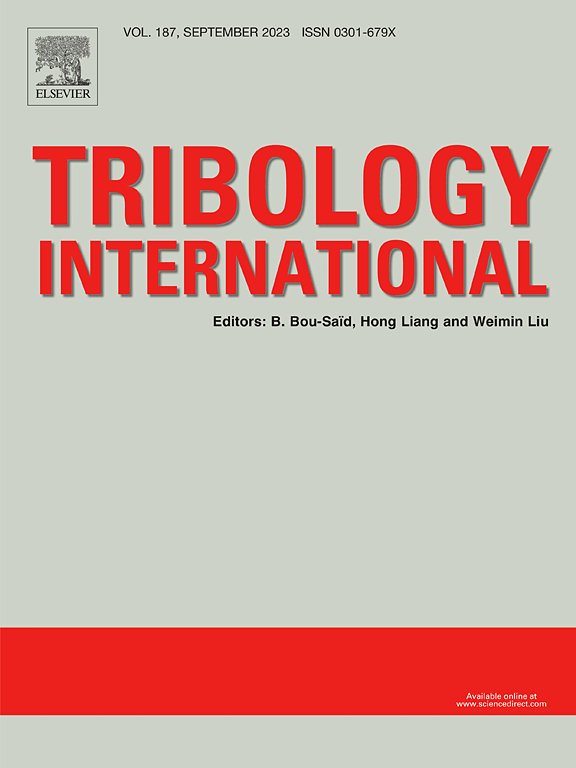纳米金悬浮液蠕动流动中rabinowitsch流体的摩擦学分析
IF 6.1
1区 工程技术
Q1 ENGINEERING, MECHANICAL
引用次数: 0
摘要
本文主要研究拉宾诺维奇流体在纤毛壁倾斜管内的流-颗粒悬浮流动的对流传热传质问题。本理论研究的目的是建立金纳米颗粒悬浮条件下拉宾诺维奇流体两相流动的数学模型。流体和颗粒相的数学模型是用连续性、运动、能量和质量浓度的偏微分方程构造的。采用润滑法对方程进行简化,并利用MATHEMATICA 13.0软件采用对流边界条件进行求解。给出了流体、颗粒速度、温度、质量浓度、压力梯度和压力上升的计算结果。从计算数据中可以看出,弗劳德数和纤毛尖端参数使所有流体的速度减慢,并且在牛顿流体和假塑性流体的情况下,在管的核心区域预测的速度值更大。牛顿流体和假塑性流体的浓度分布与施密特和索雷特数值相比是递减的。在假塑性流体中,颗粒相速度比流体相速度大4 %。目前的工作可以在医学领域用于治疗甲状腺肿,借助纤毛清除鼻孔中的过敏原,以及识别受损的人体器官。本文章由计算机程序翻译,如有差异,请以英文原文为准。
Tribological analysis of rabinowitsch fluid in peristaltic flow with gold nanoparticle suspension
The current study focuses on convective heat and mass transfer of fluid-particle suspension flow of Rabinowitsch fluid in an inclined tube with ciliated walls. The objective of this theoretical study is to develop the mathematical model of the two-phase flow of Rabinowitsch fluid in peristaltic phenomena under the suspension of gold nanoparticles. The mathematical model for fluid and particle phases is constructed using partial differential equations of continuity, motion, energy, and mass concentration. The lubrication approach is used to simplify the equation and solve it by using MATHEMATICA 13.0 by using convective boundary conditions. The results for fluid, particle velocities, temperature, mass concentration, pressure gradient, and pressure rise are presented. From the computational data, it is noted that the Froude number and cilia tip parameter slow down the velocity of all fluids, and greater values of velocity are predicted at the core region of the tube for the case of Newtonian and Pseudoplastic fluids. The concentration profiles of Newtonian and Pseudoplastic fluids are diminishing versus Schmidt and Soret numbers. It is also observed that the particle phase velocity is 4 % greater than the fluid phase in the case of Pseudoplastic fluid. The present work can be used in the medical field to cure goiter glands, remove allergens from our nostrils with the help of cilia, and in the identification of damaged human body organs.
求助全文
通过发布文献求助,成功后即可免费获取论文全文。
去求助
来源期刊

Tribology International
工程技术-工程:机械
CiteScore
10.10
自引率
16.10%
发文量
627
审稿时长
35 days
期刊介绍:
Tribology is the science of rubbing surfaces and contributes to every facet of our everyday life, from live cell friction to engine lubrication and seismology. As such tribology is truly multidisciplinary and this extraordinary breadth of scientific interest is reflected in the scope of Tribology International.
Tribology International seeks to publish original research papers of the highest scientific quality to provide an archival resource for scientists from all backgrounds. Written contributions are invited reporting experimental and modelling studies both in established areas of tribology and emerging fields. Scientific topics include the physics or chemistry of tribo-surfaces, bio-tribology, surface engineering and materials, contact mechanics, nano-tribology, lubricants and hydrodynamic lubrication.
 求助内容:
求助内容: 应助结果提醒方式:
应助结果提醒方式:


